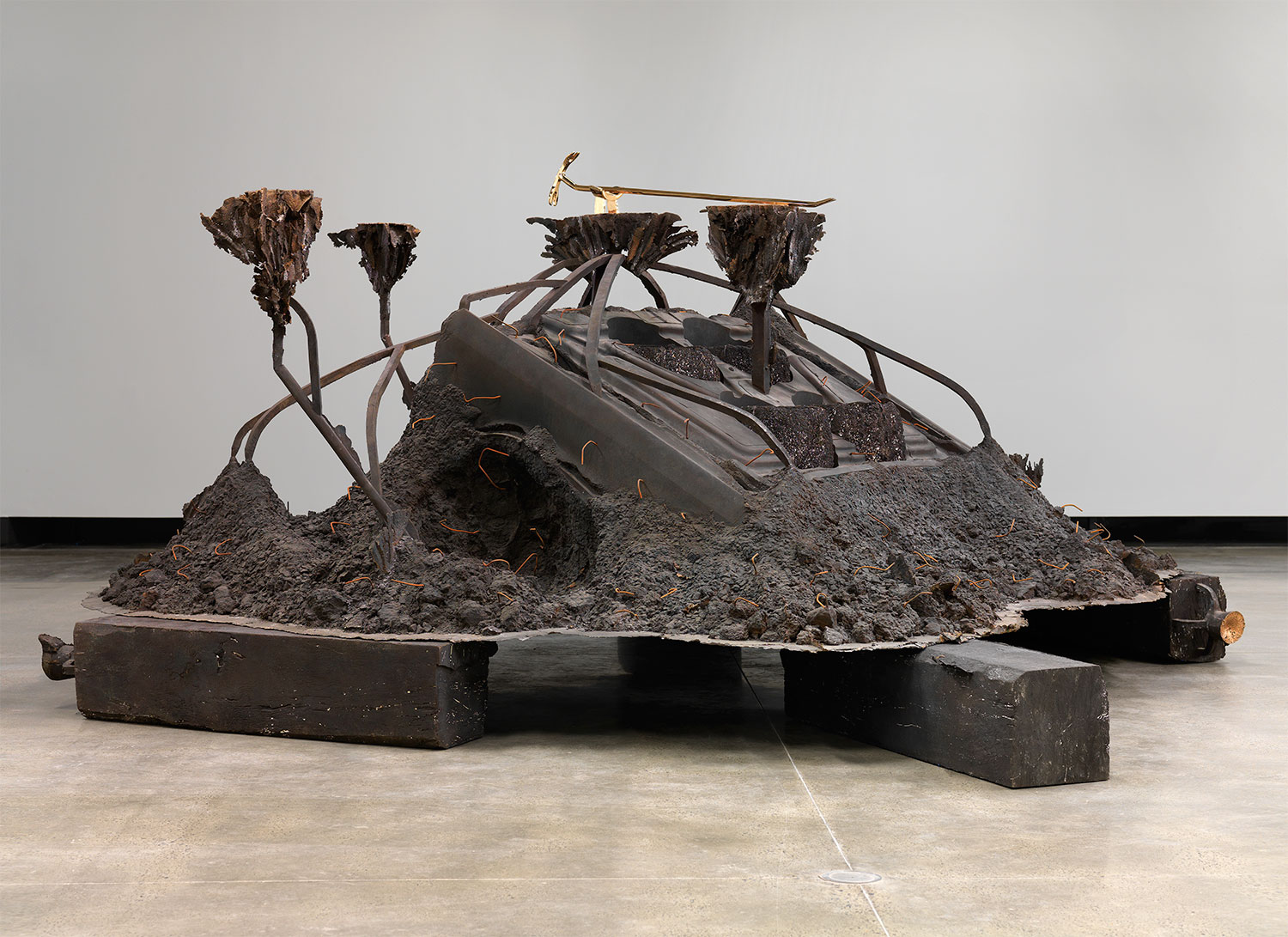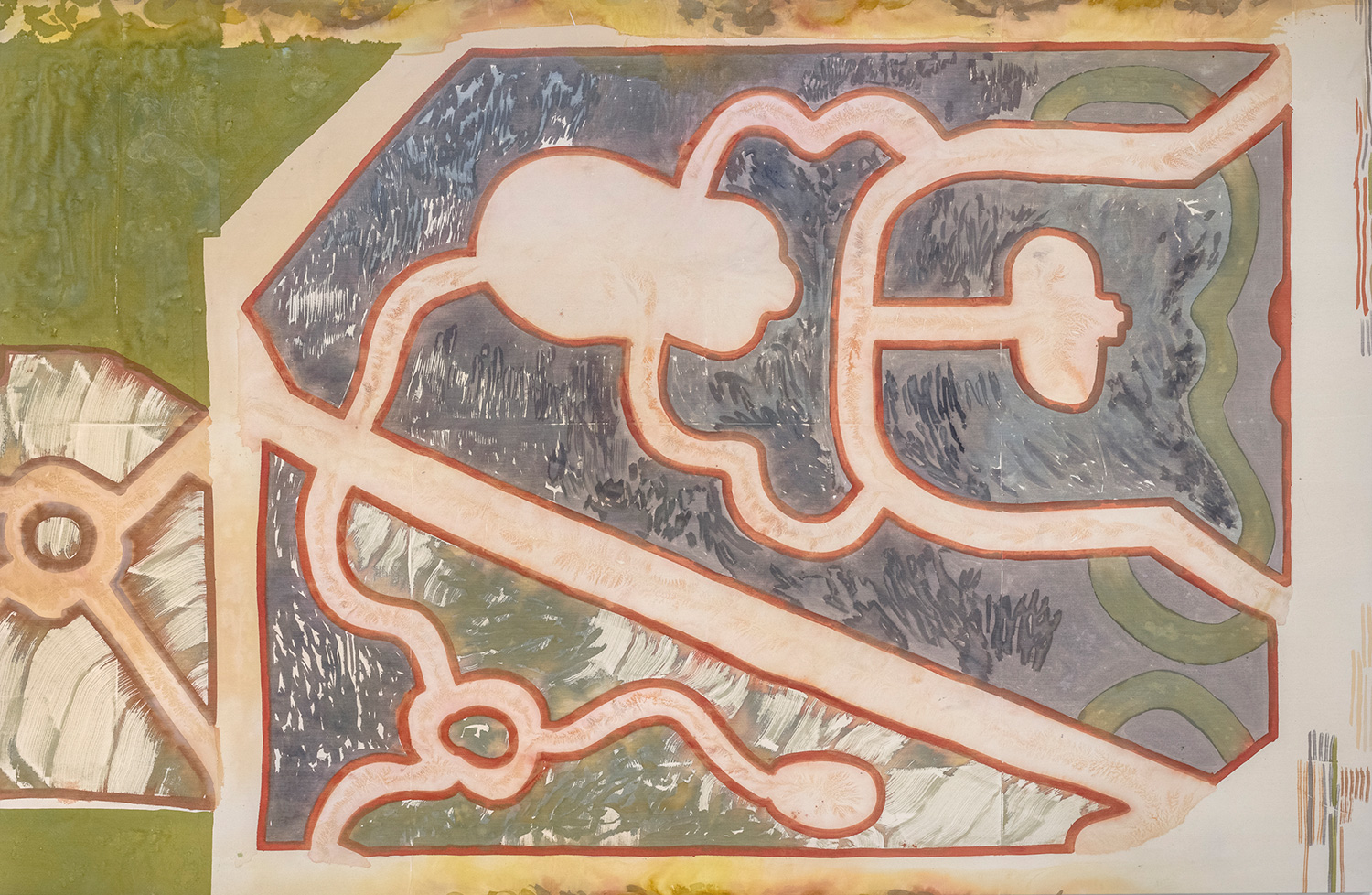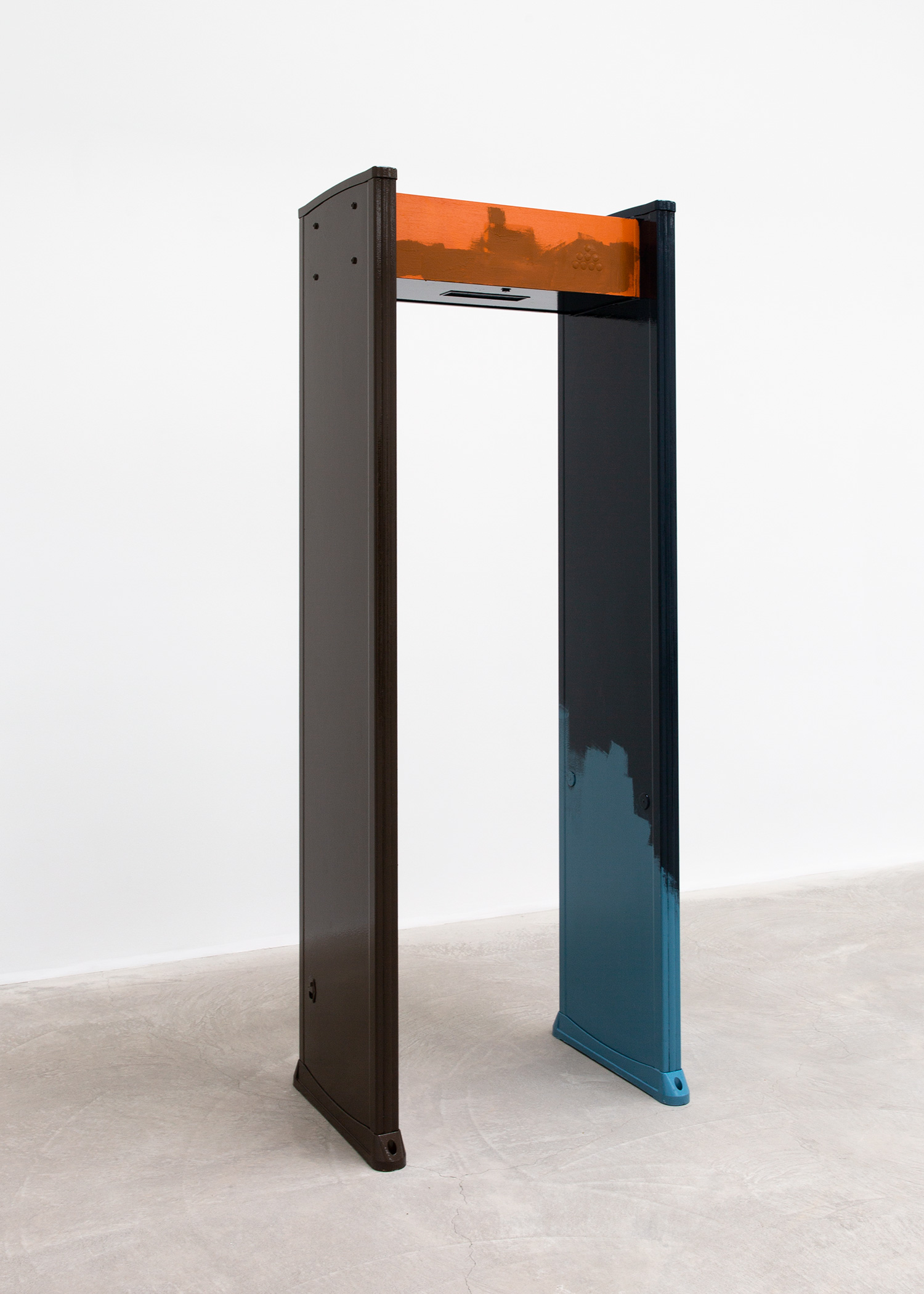In this seductive two-person show, taking its cue from John Berger’s 1971 essay “Field,” two artists working in seemingly different media converse with one another across time and space. The result of this dialogue is painting flirting with sculpture, on the one hand, and sculpture edging toward painting, on the other. The sheer monumentality and precision of Karolina Bielawska’s painting installation Torque (2021), which fills an entire wall of the main gallery space, contrasts with Matthew Peers’s somewhat wonky, medium-size sculptural works protruding from the pristine white walls and occupying liminal spaces such as door openings or wall edges, as if to draw attention to the architectural features of the space, its passageways and blind alleys.
Although she thinks of herself as a painter, Bielawska is drawn to supports that are not all canvas, as well as to otherwise unwonted painting materials. In this instance, the six lightly overlapping panels mounted onto a metallic frame are standard-sized OSB boards, a cheap and readily available building material the artist paints over with layers of gouache and pungent black bitumen that one can smell from up close. For this series, which marks a departure for a sculptor who has hitherto worked with roughcast and cement, among other media, Peers has turned to such poor, flimsy materials as cardboard and craft board, which could be easily sourced during the lockdown period. Untitled (Flower) (2021) even makes use of the cardboard core of a loo roll to hold together the eponymous cutout flourish that appears to be sitting atop a two-story house.
For Bielawska, the OSB carries associations of being boarded up, fenced in, just as the mesmerizing patches of Prussian blue that occasionally show through the matte-black-painted surface evoke the sky, the limitless horizon, and boundless space. Painted inside and out — in a spare palette of mostly muted colors recalling traditional Japanese earthenware that the British artist acknowledges as being among his sources of inspiration — Peers’s sculptural objects flaunt their box-like structure, using borders and strips of cardboard to create architectural frames, while at the same time relentlessly perforating them in a gesture reminiscent of Gordon Matta-Clark’s Conical Intersect (1974). In their hankering after freedom, both bodies of work speak to our present moment of confinement.









